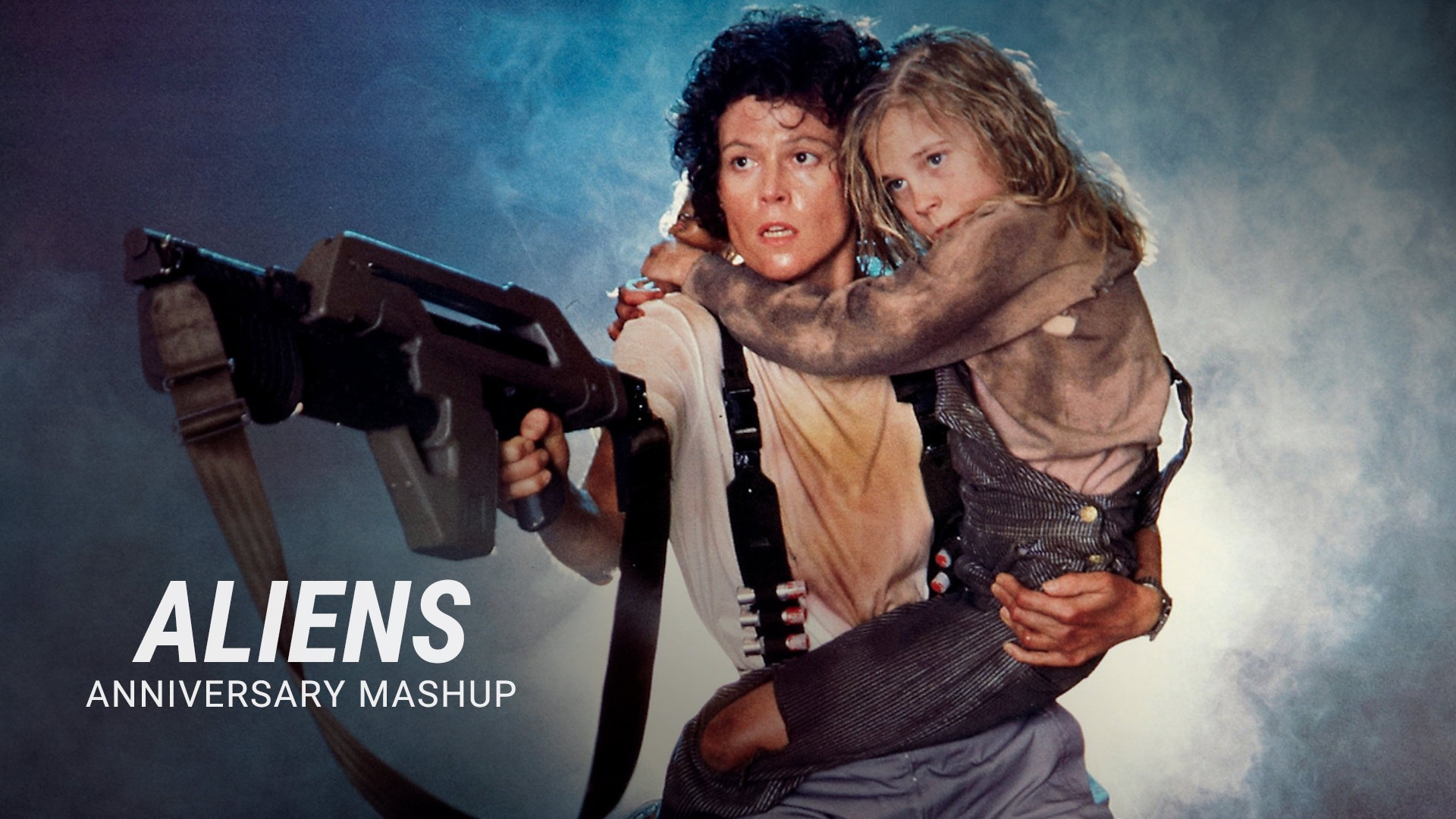Aliens (1986)

“Aliens” (1986), directed by James Cameron, is a seminal science fiction film that stands as both a sequel to Ridley Scott’s 1979 classic “Alien” and a genre-defining work in its own right. The film continues the story of Ellen Ripley, portrayed by Sigourney Weaver, as she returns to the world of the xenomorphs with a new and thrilling perspective. “Aliens” expands upon the themes of its predecessor, combining elements of horror, action, and psychological drama to deliver a compelling and multifaceted narrative.
“Aliens” picks up 57 years after the events of “Alien.” Ellen Ripley, the sole survivor of the Nostromo, is found drifting in space and is rescued by a salvage crew. The film introduces Ripley to a future where humanity has established colonies on other planets. She learns that the planet LV-426, where her crew first encountered the xenomorphs, has been colonized. However, communication with the colony has been lost, and Ripley is persuaded to return to the planet as part of a mission to investigate.
The plot of “Aliens” effectively blends elements of science fiction with intense action and horror. Upon arriving at LV-426, Ripley and a team of Colonial Marines discover that the colony has been overrun by xenomorphs, and the survivors are in desperate need of rescue. The marines, equipped with advanced weaponry and technology, are initially confident in their mission. However, they soon realize the true scale of the threat as the xenomorphs prove to be far more dangerous than anticipated.

The film’s structure is notable for its shift from the isolated horror of “Alien” to a more expansive, action-oriented approach. The first act focuses on building tension and setting up the mission, while the second act transitions into intense combat and survival scenarios. The final act delivers a high-stakes confrontation between Ripley and the xenomorph queen, culminating in a dramatic and action-packed conclusion.
Ellen Ripley, as portrayed by Sigourney Weaver, is the cornerstone of “Aliens.” Her character undergoes significant development throughout the film. In “Alien,” Ripley was introduced as a determined and resourceful survivor. In “Aliens,” she is portrayed as a more complex figure, grappling with trauma from her previous encounter with the xenomorphs and the challenges of her new role as a protector.

Ripley’s relationship with Newt, a young girl who is one of the few survivors of the xenomorph outbreak, adds a profound emotional dimension to the film. Ripley’s maternal instincts are awakened as she forms a bond with Newt, and her commitment to protecting the child becomes a driving force in the narrative. This relationship humanizes Ripley and adds depth to her character, showcasing her vulnerability and strength in equal measure.
The film also introduces a memorable ensemble of characters in the Colonial Marines. Characters such as Hicks (Michael Biehn), Vasquez (Jenette Goldstein), and Hudson (Bill Paxton) each bring distinct personalities and traits to the story. The marines’ interactions, camaraderie, and individual arcs provide a contrast to the earlier, more solitary focus on Ripley. Their interactions with the xenomorph threat and each other contribute to the film’s tension and emotional impact.
“Aliens” explores several themes that build upon the foundation of “Alien.” One of the central themes is the nature of motherhood and protection. Ripley’s relationship with Newt highlights her role as a surrogate mother and underscores the theme of maternal instinct. The xenomorph queen, who serves as the primary antagonist, symbolizes the destructive power of a perverse form of motherhood, contrasting sharply with Ripley’s protective instincts.

Another significant theme is the struggle between humanity and the alien other. The film expands on the notion of the xenomorphs as a relentless and invasive force, representing existential threats and the limits of human control. The marines’ initial confidence and subsequent defeat underscore the vulnerability of humanity in the face of such a formidable adversary.
The film also addresses themes of corporate greed and exploitation. The presence of the Weyland-Yutani Corporation, which is revealed to have a vested interest in the xenomorphs for their potential as biological weapons, highlights the dangers of prioritizing profit over human life. This theme is explored through the character of Burke (Paul Reiser), whose morally questionable actions drive much of the film’s conflict.
James Cameron’s direction in “Aliens” is characterized by its dynamic and immersive visual style. The film’s use of practical effects, miniatures, and detailed set design creates a believable and terrifying depiction of the xenomorph threat. The design of the xenomorphs, including the introduction of the xenomorph queen, is both intricate and menacing, contributing to the film’s horror elements.

The film’s action sequences are particularly noteworthy for their intensity and choreography. The confrontation between the marines and the xenomorphs is depicted with a combination of suspenseful pacing and high-octane action. The use of lighting, sound design, and camera work enhances the tension and creates a palpable sense of danger.
The film’s pacing is well-balanced, with moments of suspense and character development interspersed with high-energy action sequences. This balance keeps the audience engaged and heightens the impact of key moments in the narrative.
“Aliens” is widely regarded as one of the greatest sequels in film history and a landmark in the science fiction and horror genres. Its influence can be seen in subsequent films and media that blend action and horror elements. The film’s success not only established Sigourney Weaver’s Ripley as a feminist icon but also demonstrated the potential for sequels to expand and elevate original stories.

The film’s combination of strong character development, thematic depth, and thrilling action has earned it a lasting place in cinematic history. “Aliens” is celebrated for its ability to build on the legacy of “Alien” while creating a distinct and memorable experience of its own.
“Aliens” (1986) is a landmark film that successfully builds upon the foundation of its predecessor while introducing new elements of action and psychological depth. Through its complex characters, engaging plot, and innovative visual style, the film remains a powerful and influential entry in the science fiction and horror genres. James Cameron’s direction, combined with strong performances and thematic exploration, ensures that “Aliens” continues to captivate and inspire audiences decades after its release.











